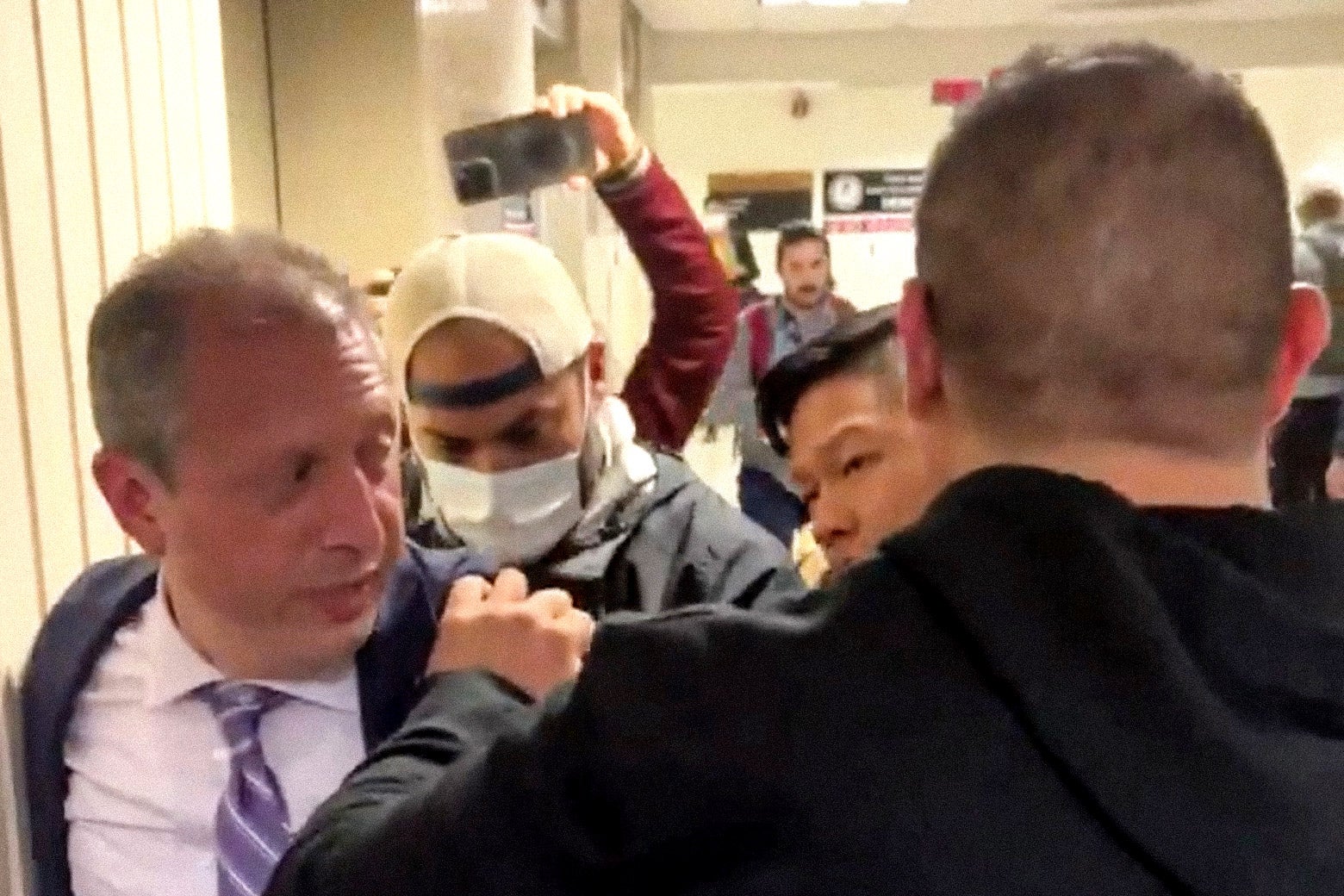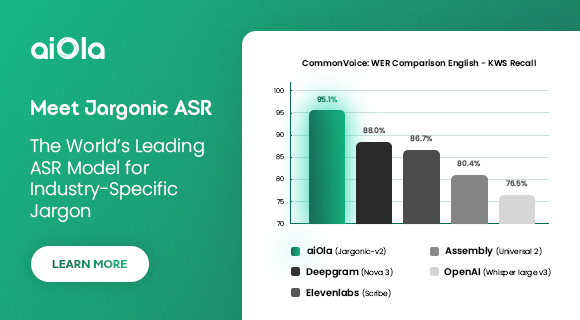The New York mayoral candidate explains what happened during and after his arrest—and why he’ll be back in immigration court.

Sign up for the Slatest to get the most insightful analysis, criticism, and advice out there, delivered to your inbox daily.
Brad Lander thought he was making another trip to Manhattan’s immigration court on Tuesday to protest U.S. Immigration and Customs Enforcement’s detentions and deportations of undocumented people in New York. Instead, the city’s Democratic comptroller and mayoral contender was shoved against a wall by masked ICE agents, handcuffed, led through the same corridors where he’d been escorting immigrants only moments earlier, and detained for roughly five hours. Federal officials claimed he had “assaulted” and “impeded” their officers, though Lander was released without charges. Gov. Kathy Hochul sought to intervene and branded the episode “bullshit.” New York Attorney General Tish James called it “a shocking abuse of power.” Rival candidates Zohran Mamdani and Andrew Cuomo both condemned the arrest.
With early voting for the Democratic primary opened, and more than 130,000 ballots already in, voters are now looking at images of a would-be mayor in zip ties. Barely 24 hours after walking out of 26 Federal Plaza, I called Lander to talk through the arrest, what exactly happened, and how the experience could reshape the last stage of his campaign. Our conversation has been edited for length and clarity.
Aymann Ismail: What were you doing inside 26 Federal Plaza on Tuesday?
Brad Lander: So this was the third time I’ve done it. I’ve gone each of the last three weeks as a part of a friend of the court program organized by Immigrant ARC that asks people to come down and bear witness to immigration hearings and, in some cases, escort people out of the building. About three weeks ago, the Department of Homeland Security changed their policy. They dismissed people’s cases, stripped them of their asylum-seeker status, and subjected them to expedited removal. I’ve been able to escort five individuals or families out of the building without incident, and that felt great. But in this instance, following what’s happened to Sen. Alex Padilla and to Newark Mayor Ras Baraka and others, they decided to arrest me. It’s a sign of Trump’s creeping authoritarianism and of the threats to our democracy.
Did the ICE agents give you any warning? Was there anything different about the case of yesterday?
ICE agents mill around the elevator bank. When I came up in the elevator yesterday before I even got to the floor, as soon as the doors open, a group of ICE agents were holding someone that they were detaining. We knew this was a possibility in every case, and at least in my limited experience so far, the seven people that I’ve accompanied, you don’t know whether they’re going to come grab the person or not until you turn the corner into the elevator lobby.
Walk me through what was happening in that exact moment when ICE agents grabbed you.
At first, I had spent a minute talking to Edgardo [the man he was escorting] as another volunteer explained what was going on. I could see how scared he was, and I was just hoping I’d be able to walk him out of the building. Then when the ICE agent started surrounding us and grabbing him, I did what I had been trained to do. I asked to see the judicial warrant. It all moved pretty quickly from there.
Reportedly an agent said before your arrest, “You want me to arrest the comptroller?”
I did not hear that. I know that’s been reported. I had not heard that at the time. I was asking for the warrant, and one agent said, “I have the warrant.” That led me to say, “Well, can I see it?” Otherwise, as you can see on the video, there was kind of a melee. And volunteers are doing more of the talking, asking for badge numbers, asking for the warrant, asking on what authority they were arresting him. This is part of the problem. In an arrest done by uniformed officers in an appropriate way, they name the person and explain on what authority they are making an arrest. And none of that happened yesterday.
What was happening in your mind in that exact moment?
I was trying to stay focused on Edgardo. There’s an important tradition of bearing witness, of nonviolent civic action, of saying, “I am going to object when people’s rights are being stripped away from them.” I was focused on that: Asking the questions about where the authority comes from, objecting to the due-process violations, insisting that the rule of law be followed. That was what was in my head.
Homeland Security accused you of assaulting and impeding federal officers. What do you make of that accusation?
The video making its way around the internet quite clearly shows that that was not the case. I only learned of that once I got out. I was surprised by it, yes, because it’s so patently not what the video shows happened.
What happened once you were detained? What kind of facility did they take you into? Were you detained with anybody else? What was that experience like?
They brought me to just a room, like an interview room—imagine a Law & Order interview room—most of the time with one ICE police officer just sitting. I didn’t have my phone. I was just sitting there for four hours. It’s true that we’re such creatures of our phones that four hours without one is notable.
I was going over in my head what had happened. There were posters on the wall of the room, like, “Wash your hands before you leave the bathroom,” except that the posters on the wall of this room said, “Are you a parent who is detained and separated from your children?,” in both English and Spanish. It is horrifying that we have normalized family separation to the point that there’s a standard bilingual poster for it on the walls of the interview room and detention rooms in federal immigration courthouses. And the information is not helpful. It’s like, “Here’s a hotline number, good luck to you.” The fact that it’s a standard enough situation that we are separating parents from their kids that we’ve designed a bilingual poster to put on the walls as though somehow that excuses behavior that is really torture—yeah, it is enraging.
Gov. Kathy Hochul called the arrest “bullshit.” Were you surprised by that?
I was grateful that the governor came down and helped get me out, and even more grateful that she announced $50 million for legal services for people like Edgardo who are facing deportation without lawyers. I was honored to be there for him, but what would’ve been way better for him was having a lawyer who could actually assert his rights and file his appeal.
This is not a small issue. Forty percent of New Yorkers are immigrants. Fifty percent live in mixed-status households, including a million children, and making sure that they can’t have their rights ripped out from under them is something that the city and the state have to be doing. Eric Adams continues to bring shame to himself and our city by showing that he’s on the side of Trump and the ICE agents.
The New York Times reported ICE didn’t legally need the warrant you said it did. Was there confusion there?
I’m not an immigration attorney. I was asking questions that I had been trained to ask. It is good for individuals when ICE comes to ask to see a judicial warrant, but I also will say I’m not an immigration attorney, and whatever the situation turns out to be, it can’t be acceptable that people did everything right, presented themselves at the border, had a hearing, came to their hearing, filed their asylum application, and then just because DHS says, “Ah, we’re going to dismiss the case,” all of a sudden have no rights at all and can be disappeared into detention and deported with no rights whatsoever. That’s why I was just asking for some due process.
You mentioned Sen. Alex Padilla was detained in Los Angeles under similar circumstances, and Mayor Ras Baraka in New Jersey, too. Do you see this as targeted toward Democratic politicians defending immigration rights?
Attorney General Pam Bondi has said on the record that their intention is to quote-unquote “liberate” Democratic cities from their elected officials. That is Orwellian speak for authoritarian domination to say the federal government is going to come arrest elected officials who are either asking questions as Sen. Padilla was, or trying to enforce their local laws as Ras Baraka was, or observing in a court and asking for a judicial warrant as I was. I think that Donald Trump is coming after our cities and our democracy, and I think it’s an important moment for leaders to step up, which is why I was glad that Congress members Nadler and Goldman went down to observe in court today.
I hope other elected officials will do it, too. I hope other people will sign up with Immigrant ARC to bear witness and be escorts themselves. They can make examples of Sen. Padilla and Mayor Baraka and me. But if Americans by the thousands, by the millions, show up as we did over the weekend at the No Kings march in peaceful, nonviolent witness, we can respond to this moment of crisis with a love of our democracy and what it means to be governed by the rule of law. That’s what we got to do.
If you become mayor, where will you draw the line between New York City’s sanctuary policies and cooperating with federal law enforcement?
Our sanctuary laws are clear and appropriate. If an individual has been convicted of a serious or violent defense, then the New York City sanctuary city laws instruct cooperation with ICE. In investigating a criminal activity, both local and federal government have a role to play, depending on the case and the scope and the charges. But where people have not been convicted of a serious or violent defense, our laws do not permit collaboration between New York City personnel or contractors and federal immigration agents. And I will not allow it. I won’t allow ICE in our schools or our public hospitals or our shelters as necessary.
I’ll put my body on the line as I did yesterday. I want to provide more legal resources so that folks have attorneys to know what to do in their cases. If parent coordinators in schools can offer to families connections to community-based legal organizations, that’ll help people come to court more ready so that somebody like Edgardo or Zed or Maria and Manuel or the other families that I’ve met and the thousands in court every day. New York City can help make sure they have lawyers if they’re facing deportation proceedings, and get the information they need to make good choices. That’s what we should be doing.
The only way New York City can stand up for the values reflected by that statue in the harbor is if we’re doing better to live up to them. We need to deliver affordable housing and safe neighborhoods and good streets and transportation to all New Yorkers, whether they are here since birth or here since breakfast. That’s what I’m going to do as mayor.
Sign up for Slate's evening newsletter.









 English (US) ·
English (US) ·